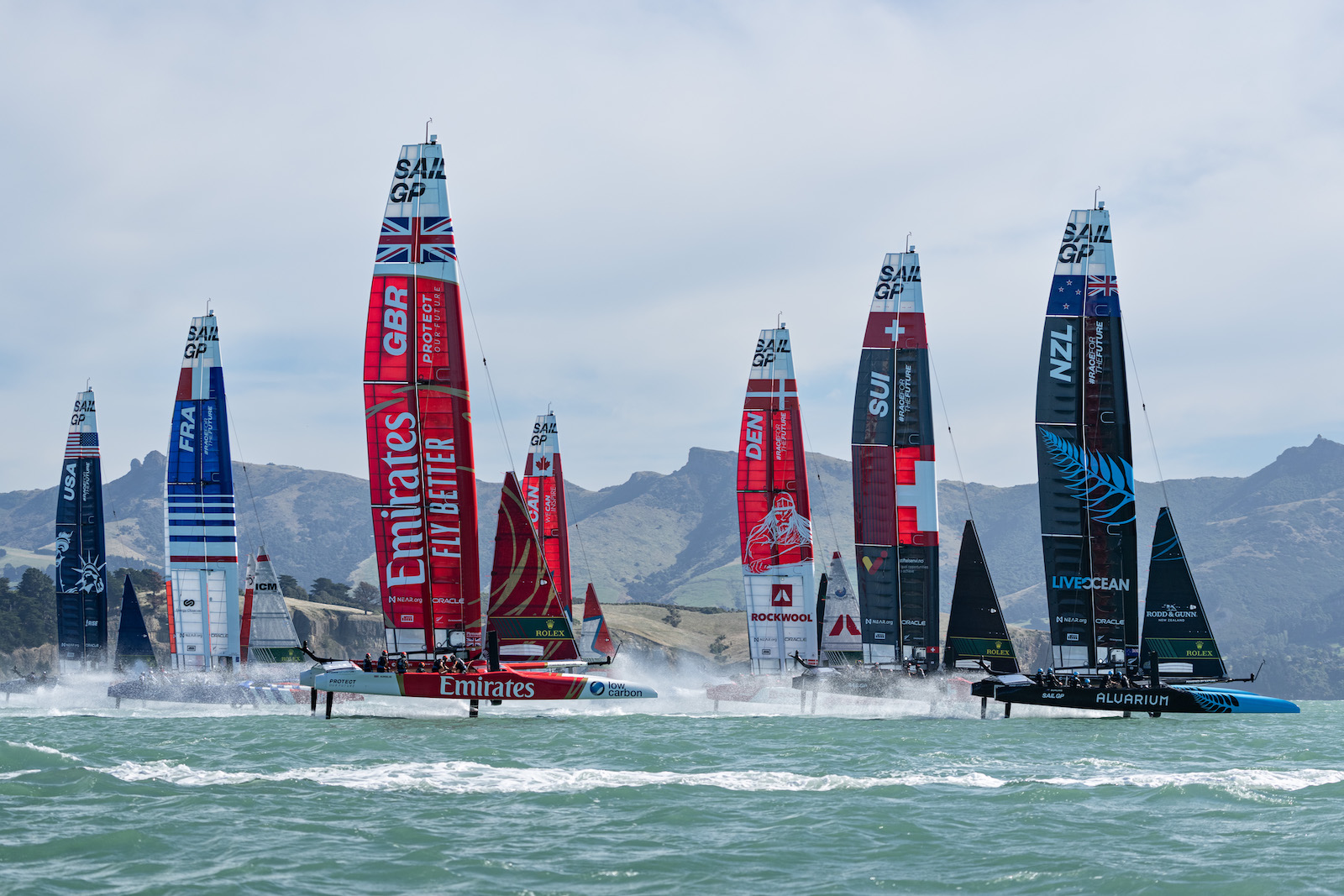Seagulls resting on the waters of San Francisco Bay have seen their share of sailboats, but they’re not accustomed to yachts screaming across the water at 80 kilometres per hour. I’m clutching my tether line behind skipper Phil Robertson, and we’re getting awfully close to a gull up ahead. Finally the bird takes off, narrowly avoiding the hull of our F50 rocket-ship catamaran. “That was a close one!” Phil says into the radio coms. Like the bewildered seagull, I’m also coming to terms with the breathtaking speed and adrenalin of SailGP.
Competitive sailing suffers from a demographic hole. Fewer kids are doing it, yacht clubs are greying, the rules are complicated, and the barrier to entry is steep. Larry Ellison, the founder of tech firm Oracle and an America’s Cup veteran, has a vision to reverse this course. When the world’s fourth-richest man sets out to create a new international sport, the prevailing winds are favourable. Now entering its fourth season, SailGP is modelled off Formula 1 Grand Prix motor racing, an aquatic spectacle pitting international teams against each other in a high-pressure test of skill and nerve, hoisted on high-tech carbon fibre foils.
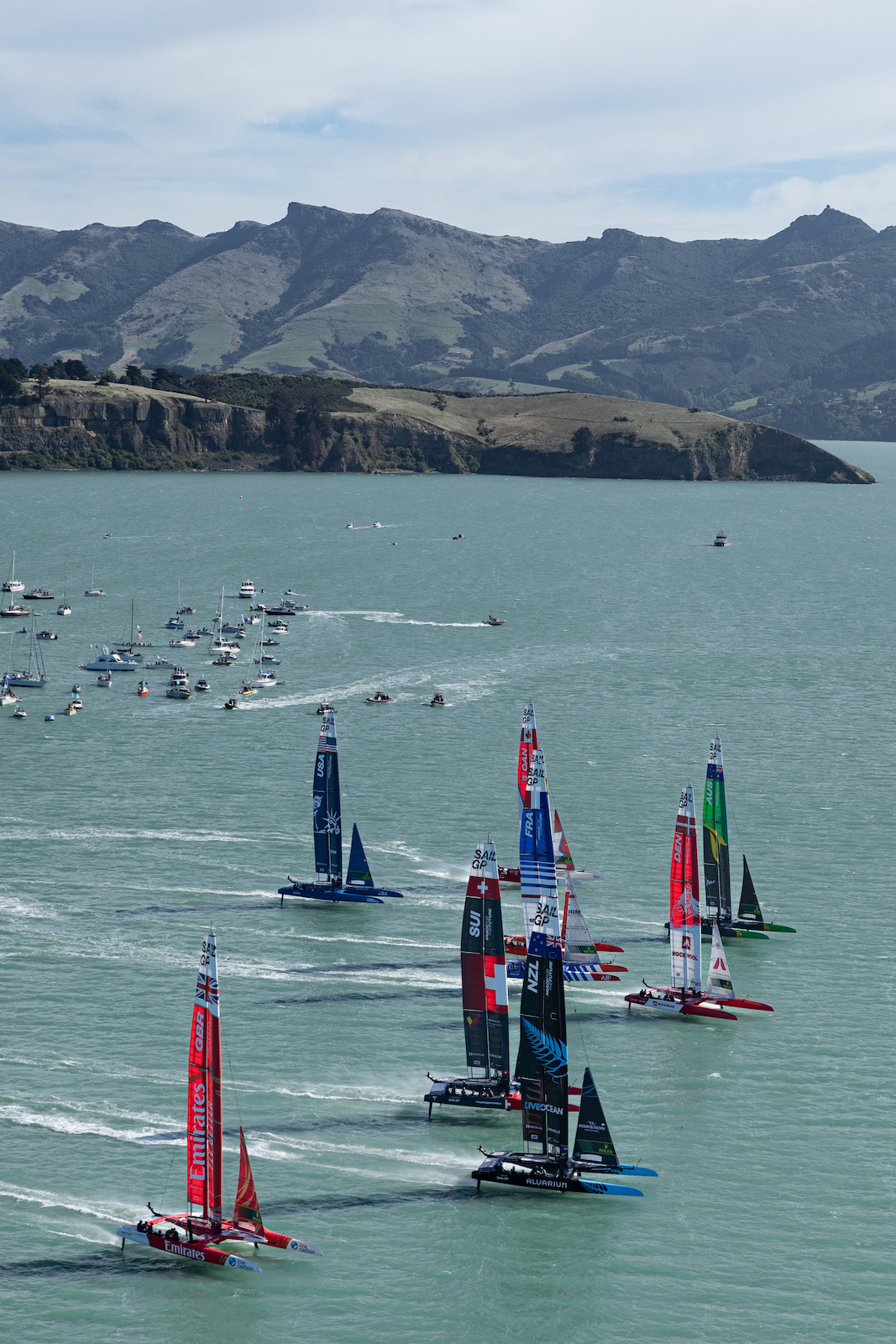
A grand prix is a two-day event made up of six races that are each 10 to 15 minutes in length. The first five races at every event include all the teams (known as a fleet race), before the winner is determined in a final podium race between the top three teams. The Grand Final of the season is a winner-take-all race between the three teams with the most points, with $1 million U.S. in prize money for the champions. Photo courtesy of SailGP.
Racing close to shore and using cutting-edge graphic overlays, the sport has fans showing up and tuning in, buoyed by the slick TV productions, dazzling prize money, and high-stakes drama. Teams compete in the same model of boat—eliminating the technological advantages that often lead to predictable results in motor racing— powered solely by wind and crewed by elite sailing athletes. Ellison’s goal is a sustainable annual sailing contest, branded and broadcast like other major sport leagues and loaded with thrills to attract a new demographic.
Even sailing veterans gawk at the sight of the F50. Built by SailGP at its technical headquarters in New Zealand, the fastest, lightest, and most stable racing yacht in history is the result of tens of millions of dollars of investment. Packed with sensors and hydraulics, the F50 has a record-breaking top speed of 54 knots (100 kilometres per hour), using large foils and an airplane-like wing to reduce friction and maximize wind power. The boats, each of which costs in the region of $4 million U.S., are provided to the international teams, with operating and logistical costs funded by sponsors and partners. Ellison currently owns five of the 10 teams, but his goal is to have each team fully funded by sponsors by season five. Major brand partners such as Rolex, Emirates, and Cognizant are already on board.
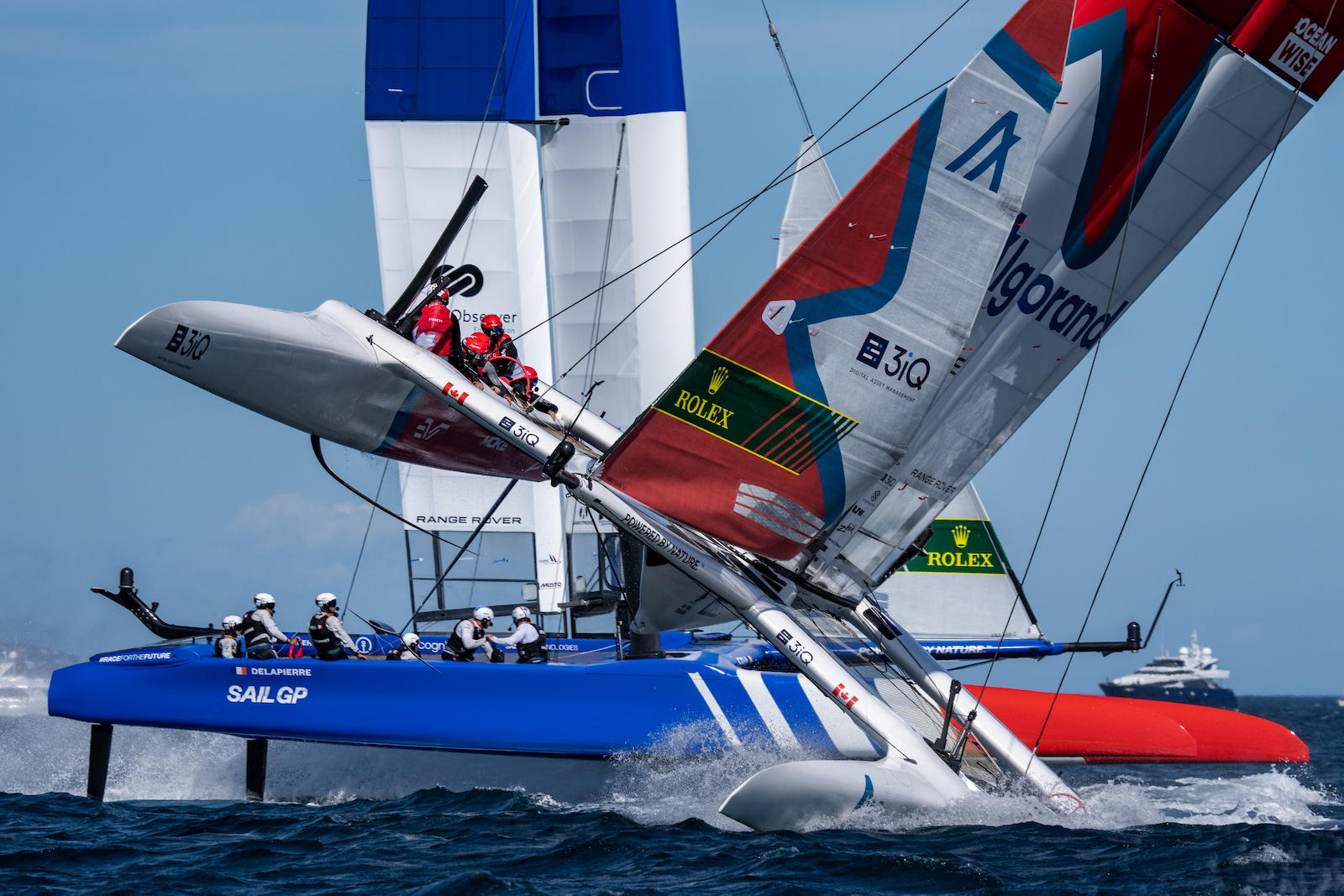
Collisions sometimes occur on the water. Photo courtesy of SailGP.
Racing on a fixed course before spectator grandstands, the boats have teams from New Zealand, Spain, Switzerland, the United States, Great Britain, and three-time-champion Australia. Canada debuted in season three, captained by New Zealander Phil Robertson and featuring Olympians Tim Hornsby and Tom Ramshaw. Boats zigzag neck and neck to find the best wind, outmanoeuvring each other in a strategic chess match. Disaster can strike with collisions both on and off the water. At the Sydney 2023 event, a freak storm hit the loading area as Canada SailGP was craning in, smashing the team’s F50 and causing massive damage to the boat and support tents. Remarkably, the team recovered to win their first event the following month in Christchurch. You can’t script the real-life drama of sport.

Photo by Robin Esrock.
Founded by digital asset entrepreneur Fred Pye, and funded by 23 limited partners (a unique financing structure within the league), the Canadian SailGP team has a vision to introduce a new generation of kids to the sport and build a viable economic future for professional sailors in the process. Since very few will ever get the opportunity to sail on an F50, how do you get more kids on the water?
Building a new sport from the ground up is an opportunity to create social impact, the brand believes. “It’s not about old white people anymore,” says Martin Smith, an educator with SailGP’s Inspire program. “We’re reaching out to schools and communities where kids have never seen a sailboat in their life. They see the F50 and think it’s a Transformer!”
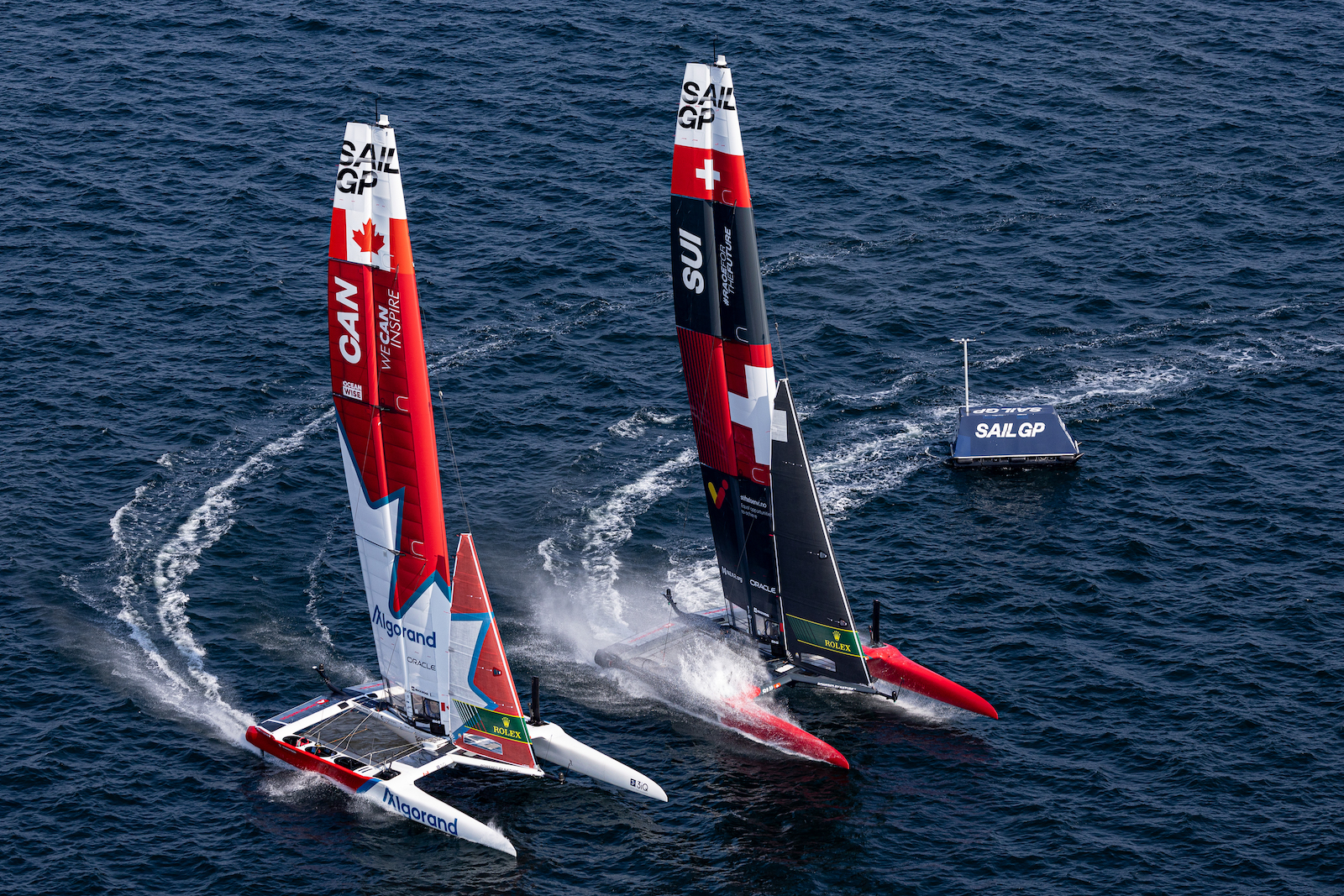
Photo courtesy of SailGP.
SailGP’s Impact League rewards teams for positive actions in their communities. Teams must partner with local sailing clubs and organizations that introduce kids to sailing, in addition to sponsoring shore clean-ups, reducing their own carbon footprints, and supporting marine research. The Canadian SailGP has raised thousands of dollars for Vancouver-based Ocean Wise, and We CAN Foil will soon launch a program at the West Vancouver Yacht Club, introducing kids to the thrill—and professional potential—of high-speed solo foil racing. To prevent the league from becoming a boys’ club, each crew must field at least one female athlete, often in the critical role of strategist.
SailGP is broadcast in 192 global territories—in Canada you can find it on TSN—but it’s still a young sport and expensive to run. Each team costs about $10 million U.S. a year to operate, with the production costs of each event in the same ballpark. Even Larry Ellison’s pockets have limits, and unlike in Formula 1, companies aren’t yet lining up to sponsor teams. The success of SailGP may depend on appealing to those who would never consider joining a yacht club.
Seated in the San Francisco grandstand to watch the final event of the season, I cheer along with dozens of Canadians who have flown into town for the weekend. For now, most of these fans own a yacht, or at least know how to sail one. Helicopters circle overhead as big screens show the action, along with course positions, trajectories, speed, and other stats, aided by lively commentary.
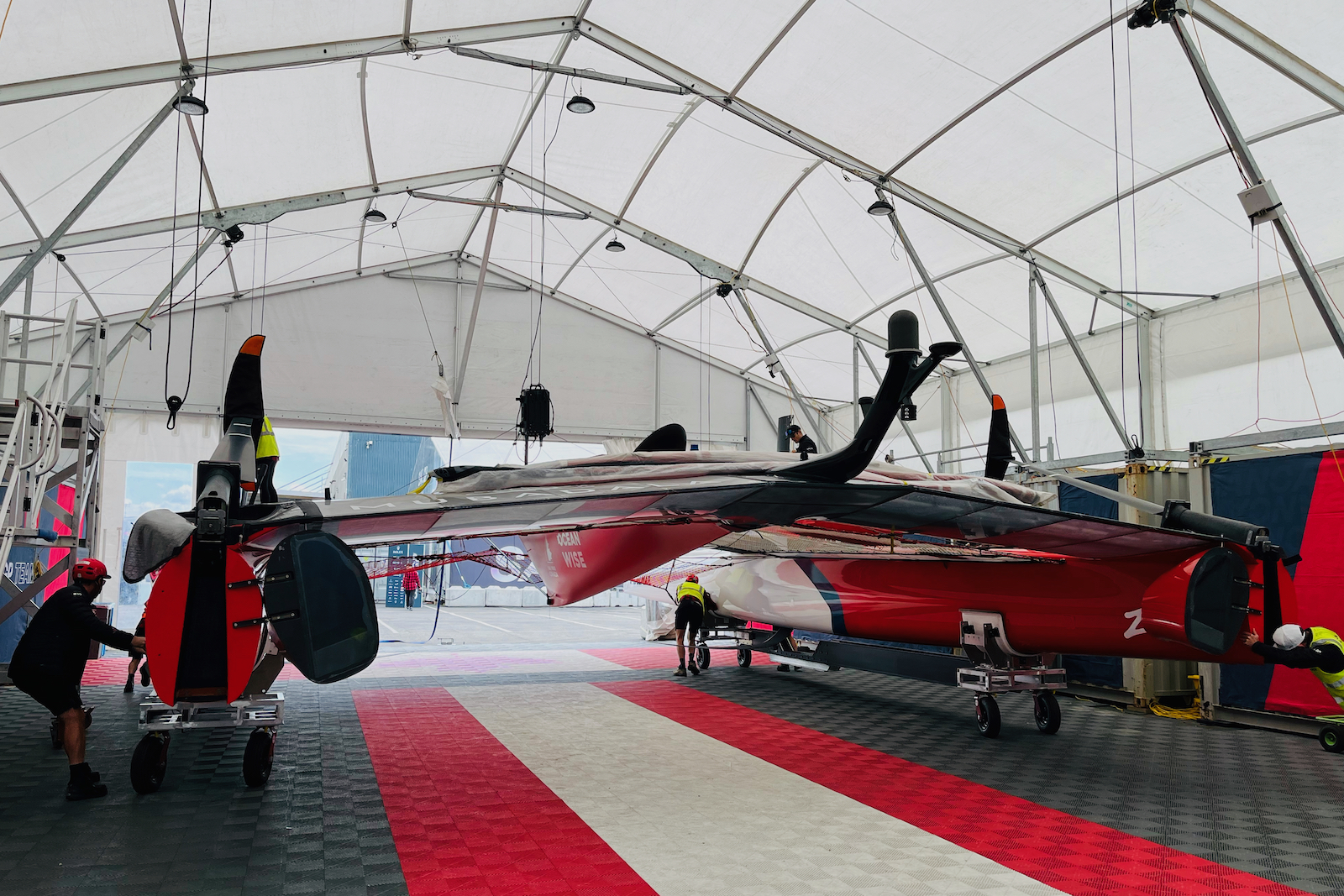
Photo by Robin Esrock.
Canada finishes the season in a respectable fifth place, and despite all teams racing with the same equipment, Australia wins its third successive title—and a healthy $1-million payday. There’s little time to rest: season four kicks off in Chicago in June, followed by events in Los Angeles, Saint-Tropez, Taranto, Andalucía-Cádiz, and Dubai.
Read more stories about the outdoors.

